The growth of IoT into nearly every business arena from medical devices and healthcare applications to industrial IoT (IIoT) is amazing to behold. Our series highlighting the range of use cases for the Internet of Things illustrates how IoT products and services are being deployed around the globe, by industry. This article focuses on the range of IoT use cases in healthcare today, supporting patients, doctors, medical staff and first responders in achieving better outcomes.
Why is IoT in healthcare a fast-growth industry? There are a number of reasons, including the capability of connected devices to monitor health vitals, route data, provide alerts, administer medications and automate critical processes. The
medical industry is adopting Internet of Things technologies in everything from medical wearables to patient monitoring and
pharmaceutical temperature monitoring in order to improve accuracy, promote efficiency, reduce costs, meet compliance requirements and enhance health and safety. In fact the term "healthcare IoT" or HIoT has been coined to describe this market niche. Digi solutions support development and deployment of a broad range of products and applications in this space.
Let's take a tour of some examples of IoT in medical and healthcare, including Digi customer case studies that help to demonstrate the breadth of IoT applications in healthcare patient support. You can find more examples of applications for a range of industries in the Customer Stories section of the Digi site.
IoT in Healthcare - Promoting Hygienic Hospitals and Clinics

There are many healthcare applications related to hygiene, and this became more imperative than ever as the COVID-19 pandemic took center stage around the world. As we shared in our article about how the pandemic accelerated the need for IoT solutions, the Internet of Things provides the right capabilities at the right time for no-contact applications and remote connectivity, all of which support more hygienic health management.
Examples of low-touch and no-touch health and medical applications include:
- Contact tracing
- Pathogen detection
- Thermal detection (elevated temperature)
- No-touch sanitation dispensers
- Automated hand hygiene
- Hygiene monitoring
- Workspace and floor sanitation
- Air quality sensors
- Biometrics scanners
- Vital signs monitoring
- Remote patient communications
- Instrument sterilization
- Medication dispensing
Here are a few examples of how Digi customers have built healthcare applications supporting sanitation and hygiene.
Floorbotics
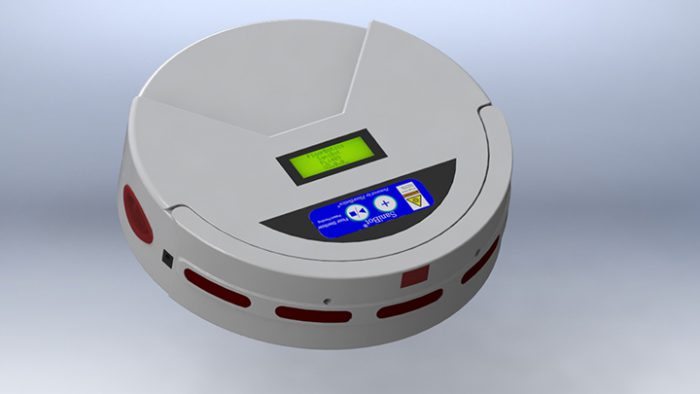 FloorBotics, a robotic software and hardware development company, develops innovative solutions in response to the market demand for cost-effective alternatives to labor-intensive and non-sterile cleaning methodologies.
FloorBotics, a robotic software and hardware development company, develops innovative solutions in response to the market demand for cost-effective alternatives to labor-intensive and non-sterile cleaning methodologies.
Their products include a line of set-and-forget robotic cleaners designed to combat hospital-acquired infections (HAIs).
The FloorBotics "Sanibot™" robot shines a controlled beam of ultraviolet light to disinfect the floor surface, providing a highly effective floor sanitation solution that is constantly at work. The robot design includes the Digi XBee® Cellular LTE CAT 1 modem, which combines 4G connectivity, built-in security, and a bundled cellular data plan in each pre-provisioned development kit. This enables the devices to communicate over the cellular network right out of the box.
Digi XBee Cellular modems are also bundled together with Digi Remote Manager® software that enables FloorBotics customers to remotely monitor and manage Sanibot™ robots and also provide over-the-air (OTA) remote firmware upgrades.
Clean Hands Safe Hands
 Clean Hands Safe Hands sought to help healthcare and medical institutions promote health and safety using wireless technology.
Clean Hands Safe Hands sought to help healthcare and medical institutions promote health and safety using wireless technology.
The Clean Hands Safe Hands product design uses wireless communication, via Bluetooth, in sanitizing stations. The stations are sensor-activated and provide staff with sanitation reminders. The sensors uniquely identify each employee and record hand hygiene events throughout the health system. As staff members enter or exit rooms, they have a specific amount of time to sanitize before the sensor records the event.
The sensors are connected using Digi XBee® Gateways which incorporate Zigbee mesh technology. Because the sanitizing stations are connected by a mesh network, they maintain collective data. This helps to avoid unnecessary reminders for professionals who just used another hand sanitizer in a nearby location.
Get to Market Faster and Avoid Costly Mistakes: New FDA Guidance for RF Wireless Medical Devices
BOS Technology
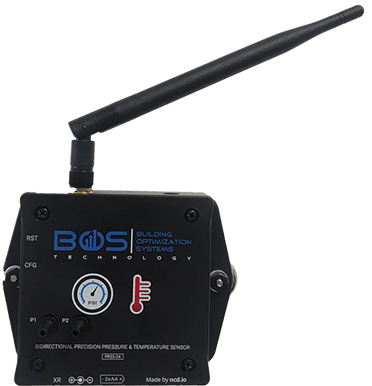 BOS Technology found they were in the right place at the right time to provide monitoring solutions for critical environments like hospitals and clinics, but also in areas where individuals congregate, such as schools/colleges, tourism destinations and other sectors. Facilities managers can monitor data from BOS Technology sensors in critical areas, including temperature, humidity, tVOC (volatile organic compounds), ACPH (air changes per hour) and differential pressure.
BOS Technology found they were in the right place at the right time to provide monitoring solutions for critical environments like hospitals and clinics, but also in areas where individuals congregate, such as schools/colleges, tourism destinations and other sectors. Facilities managers can monitor data from BOS Technology sensors in critical areas, including temperature, humidity, tVOC (volatile organic compounds), ACPH (air changes per hour) and differential pressure.
For example, air supplies and air exchanges through HVAC systems can provide a range of data points that act as health metrics for a building's environment.
“In healthcare settings, construction teams must maintain negative pressure to trap unhealthy particles,” said John Lepak, chief executive officer of BOS Technology. “As the coronavirus pandemic started to spread rapidly, we realized that this technology would also work well in clinical settings. “Frankly, our device – the Differential Pressure Transmitter – is ideal for coronavirus patient rooms because it’s based on the same ideas and goals. In this case, you’re trying to trap pathogens using negative air pressure to prevent the spread of the virus into the hallway and beyond.”
IoT Wearables: Health Monitoring, Injury Reduction and Contact Tracing
With advances in Bluetooth technology, and the need for immediacy in feedback, wearables are an enormous growth area for IoT in healthcare. In this section, meet some of the Digi customers who are designing wearables for wellness, ergonomics, contact tracing and patient/doctor connectivity.
Kinetic Wearables
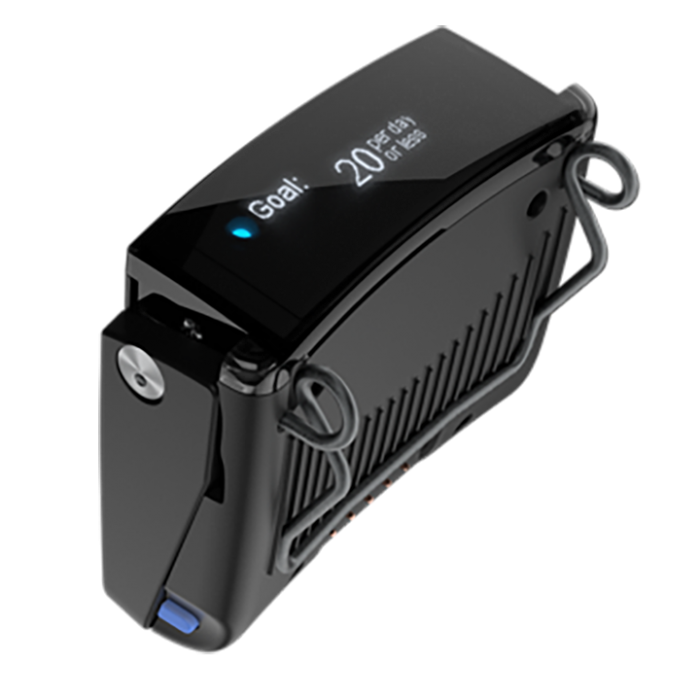 Healthcare today is not just about treatment. And its not just about care in hospitals and clinics. There is a growing belief in the adage that "prevention is the best medicine." Business leaders are increasingly promoting healthy habits to improve worker health and safety. These practices, in turn, can save companies enormous amounts annually in lost productivity and worker compensation due to injuries.
Healthcare today is not just about treatment. And its not just about care in hospitals and clinics. There is a growing belief in the adage that "prevention is the best medicine." Business leaders are increasingly promoting healthy habits to improve worker health and safety. These practices, in turn, can save companies enormous amounts annually in lost productivity and worker compensation due to injuries.
The Kinetic company developed a workplace wearable called REFLEX™ to improve worker safety through biofeedback. Designed for businesses whose employees perform workplace tasks that involve bending, twisting, and lifting, REFLEX is an ultra-compact device about the size of a small mobile phone. As the worker bends, the device provides feedback in the form of a light vibration if the employee performs any improper lifting or twisting that could lead to injury. At the end of the shift, the employee and supervisor can review the progress on a dashboard that collects data throughout the day.
Supply chain companies and manufacturing facilities that adopt the technology see a dramatic reduction in unsafe movements — in one case, down from 320 poor movements per day to just 12. The REFLEX incorporates sensors and the powerful, stamp-sized Digi ConnectCore® 6UL system-on-module (SOM), which includes pre-certified Bluetooth 4.0 and Wi-Fi integration, cellular connectivity options, and dual 10/100 Mbit Ethernet support in a high-performance, energy efficient module.
"Digi ConnectCore is very small and power-efficient, so it fits nicely in our device," said Aditya Bansal, Kinetics co-founder and CTO. "And it's well suited to the rugged environments where we're deployed.
Kinetic Updates for Contact Tracing
Additional worker safety concerns surfaced with the Covid-19 pandemic, especially in the close environments of industrial workplaces. Reducing worker virus transmission and quickly and accurately identifying potential risks have become key priorities in keeping industrial employees safe and operations open. “When Covid infections among industrial workers began forcing facility shutdowns, we saw a need to better leverage smart technology to connect essential employees and help protect them from illness,” said Bansal.
LASARRUS Wearables for Physical Therapy
.png?lang=en-US) Patient monitoring is one of the most rapidly growing IoT use cases in healthcare. For the founders of LASARRUS, a company that designed a patient monitoring device to support patients in physical therapy, better insights and improved outcomes for stroke victims were driving factors in development of their flagship WearME product.
Patient monitoring is one of the most rapidly growing IoT use cases in healthcare. For the founders of LASARRUS, a company that designed a patient monitoring device to support patients in physical therapy, better insights and improved outcomes for stroke victims were driving factors in development of their flagship WearME product.
LASARRUS (an acronym for Limb Activation Stimulation And Robotic Rehabilitation Unencumbered Services), uses battery-powered sensors configured to capture biometrics such as acoustic cardiography (through a built-in microphone), EKG, temperature, body position, and more. These sensors connect to Digi XBee Zigbee modules configured in a mesh network.
"In the era of COVID-19, fewer patients or clinicians want to have in-person patient encounters," said co-founder Nelson Emokpae. "We’re recognizing that the LASARRUS WearME can play an important role in fighting the pandemic from a telehealth perspective. First, patients can wear our device from home and enable the clinician to quickly obtain a complete physiological assessment. That will improve patient outcomes without exposing them to unnecessary risk."
Download our Reliable Connected Health Brochure
Learn how industry-leading Digi solutions are purpose-built for today’s connected medical devices.
Download PDF
IoT in Patient Care and Pain Medication Management
IoT applications in healthcare today solve a range of critical needs. Monitoring and managing medications, ensuring that patients dose correctly and on schedule are ongoing challenges in clinics, hospitals and care facilities.
An additional challenge is the ability of busy care staff to quickly respond to every patient need.
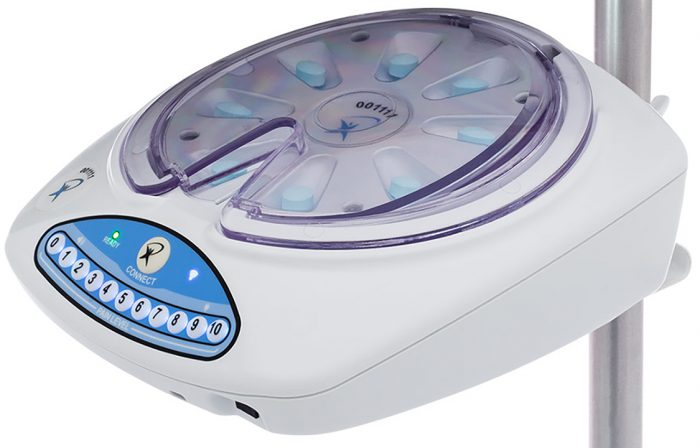 Avancen developed an IoT solution for healthcare that accurately and quickly dispenses pain medication in a PRN delivery method. PRN, which stands for the Latin "pro re nata," means "as needed," or as circumstances require. The product is called Medication On Demand (MOD®), and is the first patient-controlled analgesic (PCA) device that empowers patients to administer their own PRN oral pain medication.
Avancen developed an IoT solution for healthcare that accurately and quickly dispenses pain medication in a PRN delivery method. PRN, which stands for the Latin "pro re nata," means "as needed," or as circumstances require. The product is called Medication On Demand (MOD®), and is the first patient-controlled analgesic (PCA) device that empowers patients to administer their own PRN oral pain medication.
While Avancen's MOD device puts the control in the hands of the patient, it comes with complete security and clinical control to prevent security breaches or overdoses. The patient waves an RFID wrist band in front of the locked, pre-programmed device to dispense the correct dose of pain medication as part of the prescribed treatment plan.
The technology behind the device is an embedded module in Digi's Embedded Systems line of products. The Digi ConnectCore® line of System-on-Modules is an ideal choice for new designs that require high performance processing, superior security, scalability and rapid time-to-market.
Medical IoT: 3D Imaging Technology
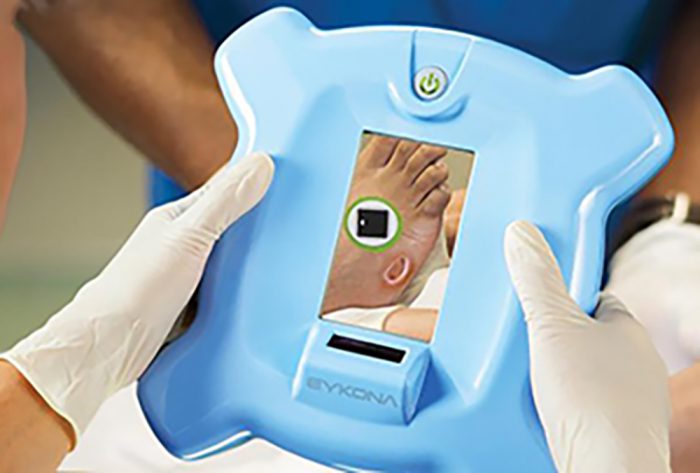 IoT technology in healthcare is taking a mjor leap forward faster application processors that can render and deliver medical imaging faster and at higher resolutions. One use case many of us may not be aware of is the need for accurate wound measurement. This is a concern with fresh wounds, in terms of assessing severity, as well as wounds that are progressing through the healing process.
IoT technology in healthcare is taking a mjor leap forward faster application processors that can render and deliver medical imaging faster and at higher resolutions. One use case many of us may not be aware of is the need for accurate wound measurement. This is a concern with fresh wounds, in terms of assessing severity, as well as wounds that are progressing through the healing process.
Eykona, a UK-based medical imaging company, developed a Wound Measurement System to meet this challenge. The system uses cameras and 3D imaging to photograph, measure and map wound progression over time. By observing changes in volume and tissue structure, clinicians can evaluate wounds and the effectiveness of treatment.
The product was built on a Digi ConnectCore® system-on-module (SOM) solution based on NXP application processors. By using a precise measurement system, healthcare providers can ensure they are not only identifying the severity of wounds, but that they administer the right care and treatment based on an accurate assessment.
Pharmaceutical Temperature Monitoring and Compliance
 As the world learned during the COVID-19 pandemic, maintaining strict temperatures for pharmaceutical drugs and vaccines is imperative. SmartSense by Digi® temperature monitoring solutions for healthcare support this critical need. SmartSense is a division of Digi International that provides complete IoT monitoring solutions for supply chain and logistics, retail food service, grocery store and health and medical applications.
As the world learned during the COVID-19 pandemic, maintaining strict temperatures for pharmaceutical drugs and vaccines is imperative. SmartSense by Digi® temperature monitoring solutions for healthcare support this critical need. SmartSense is a division of Digi International that provides complete IoT monitoring solutions for supply chain and logistics, retail food service, grocery store and health and medical applications.
As vaccines were being developed to combat the spread of the COVID-19 virus, SmartSense announced that their pharmaceutical monitoring solution met guidelines from the U.S. Centers for Disease Control and Prevention (CDC) for handling COVID-19 vaccines, and that these solutions would support the entire vaccine cold chain, from manufacturers to end-point providers.
IoT Use Cases in Emergency Response and Critical Communications

First responders play a critical role in the care cycle — responding to injury incidents and routing ambulances through city streets to get patients to hospital services — which require fast, reliable communications and GPS navigation.
The FirstNet® wireless network was developed initially to ensure emergency personnel have priority and pre-emptive mobile communications capabilities during large scale public emergencies when networks can become jammed. Today, IoT solutions providers like Digi International are integrating FirstNet into cellular devices and certifying them for use on these networks. These devices are then deployed for mission critical communications not only in emergency vehicles like police, fire and ambulance, but also for priority communications in transit systems, intelligent traffic management systems, and more.
For example, the New York City Department of Transportation deployed 14,000 Digi FirstNet Ready™ cellular routers to intersections across all five boroughs to improve traffic flow and support rapid response and communications for emergency responders.
IoT in Telemedicine, Remote Surgery, Robotics

We've only just begin to see the massive growth in IoT use cases in healthcare. With faster processors, the increase in data transfer speed and reduced latency of 5G networks, the speed of innovation in medical technology, and better security, this industry is poised to take off.
Today, developers are hard at work developing next generation medical devices that will increase the precision of care, enhance remote healthcare and telemedicine, and enable video-assisted and robotic surgeries. While we will never replace the primary care practitioner, who can listen and provide hands-on care, physicians and other care professionals will ultimately have more diagnostic and care capabilities assisted by IoT technology, machine learning, artificial intelligence and automation.
The benefits of IoT in healthcare and medical applications will continually expand with the advances rapidly occurring in IoT technology.
More IoT Applications and Use Cases In addition to IoT use cases in healthcare, you can find more IoT use cases and examples in these blog posts:
How to Connect with Digi:
Note: This post was initially published in February of 2019, and was updated in July of 2021.